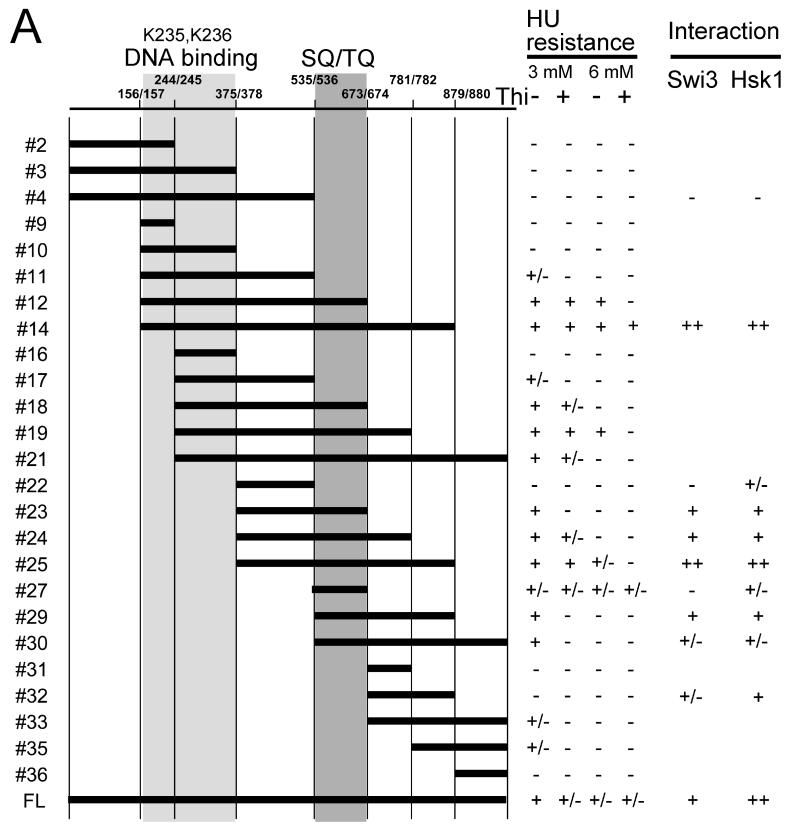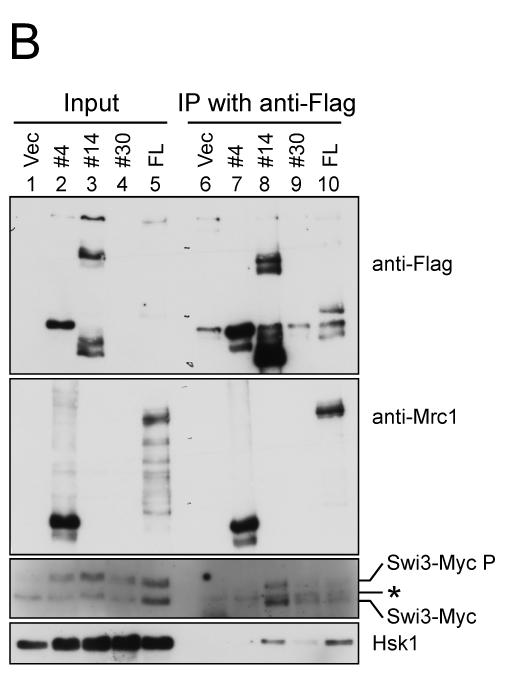Figure 5. Mrc1 segments required for resistance to HU and protein interactions.
(A) A series of deletion derivatives of Mrc1 indicated were cloned into a pREP41X-3Flag which permits addition of 3xFlag-tag at the C terminus of the cloned fragment, and were expressed in mrc1Δ cells (MS252). HU resistance of each transformants were examined on EMM plates containing 3 mM or 6 mM HU. The extent of growth is indicated in the right. +. +/− and – indicate full growth, partially impaired growth and no growth, respectively. The interaction of selected deletion derivatives with Swi3 and Hsk1 is also shown. ++, +, +/− and – represents relative strength of interaction. Light gray and gray segments indicate those involved in DNA binding and containing SQ/TQ clusters, respectively. (B) Mrc1 segments 1-535 (#4), 157-879 (#14), 536-1019 (#30) and a full length of Mrc1 (FL) expressed in mrc1Δ cells (SH2309) were immunoprecipitated with anti-Flag antibody. Western blotting analyses were conducted using the antibodies indicated. (C) Mrc1 segments 376-535 (#22), 376-673 (#23), 376-781 (#24), 376-879 (#25), 536-673 (#27), 536-879 (#29) and 674-879 (#32) expressed in mrc1Δ cells (SH2309) were immunoprecipitated with anti-Flag antibody. Western blotting analyses were conducted using the antibodies indicated. * indicates a non-specific band detected in anti-Flag immunoprecipitates. Swi3-MycP indicates the mobility-shifted form of Swi3-Myc due to phosphorylation.



